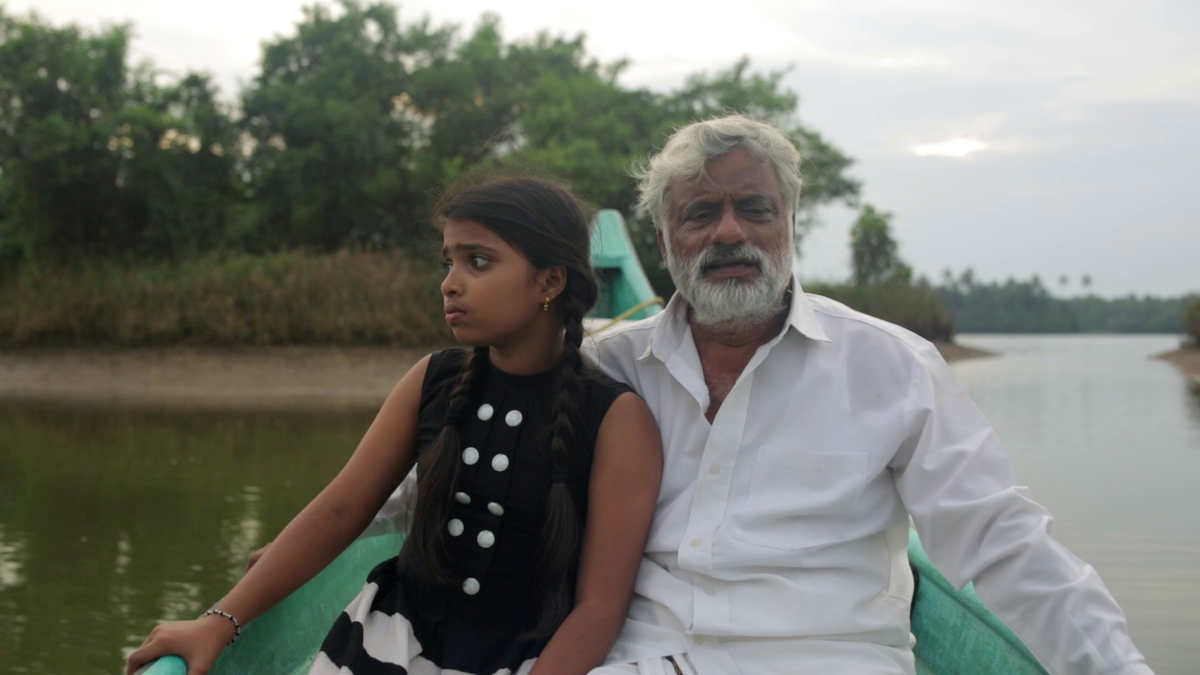Samruddhi Kundapura in ‘Naale Rajaa Koli Majaa’
| Photo Credit: Special Arrangement
Naale Rajaa Koli Majaa is an age-old rhyming expression used in Karnataka, especially by school-going children. It hints at the excitement of enjoying a Sunday doing what you love — eating chicken curry in this case — after a week spent in school. Abhilash Shetty’s sophomore film is charming, and a fitting addition to his koli (chicken) universe.
His debut, Koli Taal (Chicken Curry), set in the Malnad region, revolved around an elderly couple’s adventure to find the missing rooster so that they can cook a delicious curry for their grandson before he departs for his town. The second movie also deals with the conflict of the missing chicken.
Sneha (Samruddhi Kundapura), an 11-year-old girl, looks forward to Sundays, not just because it’s a holiday, but also because she gets to eat chicken curry, a regular item at her home on weekends. However, her heart sinks when she learns that her father has bought a bag of vegetables instead of chicken, owing to Gandhi Jayanti, on which meat selling is banned.

Naale Rajaa Koli Majaa (Kannada)
Director: Abhilash Shetty
Cast: Samruddhi Kundapura, Prabhakar Kunder, Radha Ramachandra, Sridhar M
Runtime: 82 minutes
Storyline: Sneha loves chicken curry but she is denied her favourite dish on Gandhi Jayanti for obvious reasons. The 11-year-old embarks on a playful yet daring journey in pursuit of the forbidden chicken curry.
The film then becomes a series of events based on the consequences of Sneha’s quest to fulfil her wish of eating her favourite dish, even as all odds appear against her. Abhilash’s love for satire is apparent, and the film thrives on irony. Sneha exposes her father’s hypocrisy as he asks her to follow the rules and abstain from eating meat, even as he is desperate to consume alcohol on a dry day (sale of alcohol is prohibited on October 2 in India).
A meat merchant laments how a one-day ban will cost him a loss of ₹5000, calling it the biggest attack on his business on a day when people celebrate Gandhi’s philosophy of non-violence. “Gandhi fought for freedom, but it’s a pity that I don’t have the freedom to do my business,” says the agitated seller. Of course, illegal traders bank on the desperate demands of consumers and make merry by selling meat at exorbitant rates. The film even looks at how politicians take advantage and corner their opponents using the Gandhi Jayanti day prohibitions.


A still from ‘Naale Rajaa Koli Majaa’.
| Photo Credit:
Special Arrangement
With no luck in her town, Sneha moves to her grandparents’ village, hoping to eat the elusive chicken curry. Her grandparents, Mahabala Shetty and Vanaja, are characters from Koli Taal, making Naale Rajaa Koli Majaa a spiritual sequel to the 2022 movie. The film slowly becomes a case study on different types of chicken (broiler and domestic) and the art of cooking chicken gravy. Abhilash takes his time to convey these ideas, and the intentional, leisurely pacing of the movie works in its favour as it matches the film’s light tone.
ALSO READ:‘Firefly’ movie review: Vamshi’s debut is a visually experimental character study of a man fighting grief
Abhilash doesn’t entirely romanticise village life as he portrays the class divide and patriarchal attitude of men matter-of-factly. Naale Rajaa Koli Majaa reflects people’s behaviour influenced by food. For Sneha, chicken is a source of pleasure. However, for her mother, it becomes a tool to protect her identity. She doesn’t allow Sneha to eat from her friend’s house because she hails from a Christian family that buys meat only from certain shops due to religious beliefs.
Naale Rajaa Koli Majaa is light on its feet and balances its gentle humour with subtle socio-political commentary. The realistic portrayal of the contrasting nature of the urban and rural backdrops adds to the appeal, while Samruddhi Kundapura’s performance is the film’s beating heart.
Naale Rajaa Koli Majaa is currently running in theatres
Published – May 12, 2025 10:50 am IST
